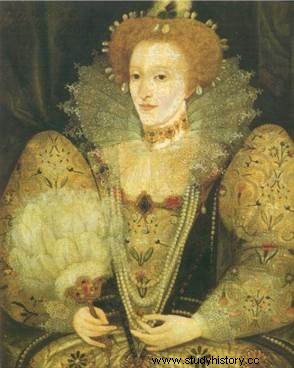 Daughter of Henry VIII and Anne Boleyn, Elizabeth I is queen of England and Ireland from 1558 to 1603. She succeeds her half-sister Marie and will be the last representative of the Tudor house. Sometimes referred to as the "Virgin Queen “, she has long enjoyed a very positive image, being considered the greatest queen in the history of England, and one of its greatest sovereigns. The Elizabethan era is indeed an exceptionally brilliant period in the history of England and corresponds to a time of intense artistic and literary activity. The reign of Elizabeth I also saw the expansion of industry and commerce, with the creation of the London Stock Exchange (1566) and the foundation of numerous chartered companies, notably the East India Company.
Daughter of Henry VIII and Anne Boleyn, Elizabeth I is queen of England and Ireland from 1558 to 1603. She succeeds her half-sister Marie and will be the last representative of the Tudor house. Sometimes referred to as the "Virgin Queen “, she has long enjoyed a very positive image, being considered the greatest queen in the history of England, and one of its greatest sovereigns. The Elizabethan era is indeed an exceptionally brilliant period in the history of England and corresponds to a time of intense artistic and literary activity. The reign of Elizabeth I also saw the expansion of industry and commerce, with the creation of the London Stock Exchange (1566) and the foundation of numerous chartered companies, notably the East India Company.
The difficult accession to the throne of Elizabeth I
It was not in the best of conditions that Elizabeth ascended the throne in 1558. Born in 1533 in Greenwich, she was the daughter of Anne Boleyn, second wife of 'Henry VIII, who ended up beheaded by order of the latter. The more than sulphurous reputation of her mother follows the young Princess Elisabeth, and this will continue part of her reign. She is therefore not the first on the list of the succession of Henry VIII; it is first Edward VI and Jeanne Gray for two short reigns (nine days for Grey…), then Marie Tudor (Marie Ire), daughter of Henry VIII and his first wife, Catherine of Aragon.
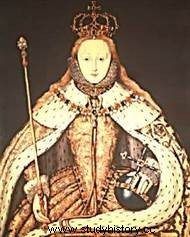 After having known a sad and studious childhood, Elisabeth also had some setbacks during the reign of Mary I since she was involved in Wyatt's insurrection in 1554. She even spent a few weeks in the Tower of London.
After having known a sad and studious childhood, Elisabeth also had some setbacks during the reign of Mary I since she was involved in Wyatt's insurrection in 1554. She even spent a few weeks in the Tower of London.
She nevertheless ascended the throne in 1558, and was crowned at Westminster on January 15, 1559. Her status as the illegitimate daughter of Henry VIII, her mother's reputation, but also all the plots of the period 1547-1558 in which she is suspected of having participated more or less directly, mean that she is not a fully recognized queen from her accession.
The religious question
She who displayed her Catholicism (probably a façade) under Mary Tudor is also the one who created the Anglican Church. However, there is debate on the exact role of the queen during this period, as well as on her motivations. Above all, it displays real pragmatism. This led to the vote of the Act of Uniformity and the Act of Supremacy in 1559, confirmed by the Thirty-Nine Articles in 1563. By these decisions, she imposed on the bishops an oath of fidelity, and became "supreme governor of the Church”.
However, Anglicanism is not unanimous. Obviously among Catholics (Pius V excommunicated him in 1570, and Catholics suffered severe repression), which was moreover in a context of tension with Spain, but also among certain Protestants, very quickly called the "Puritans", who criticize him for a Calvinism that was not radical enough and too crossbred with popery. It is nevertheless these ambiguities which facilitate the religious transition in England.
Exercise of power
The queen's way of governing is also marked by pragmatism. Elizabeth initially retains most of Mary Tudor's advisers, but separates from the clergy to make it a purely secular body of government. A clan forms around her chief adviser, the experienced Secretary of State William Cecil, and the Queen governs with this Privy Council. Elisabeth can then devote herself to her main task, relations with Parliament.
This one is summoned less under Elizabeth's reign than under her predecessors, but it is more under control. If the Queen knows how to rely on Parliament to settle the religious question or during the conflict with Spain, she also knows how to show authority (even authoritarianism) if necessary, while her advisers skilfully negotiate with the parliamentarians. It was therefore necessary to wait until the end of his reign for Parliament to begin to become a credible opponent.
The Mary Stuart problem
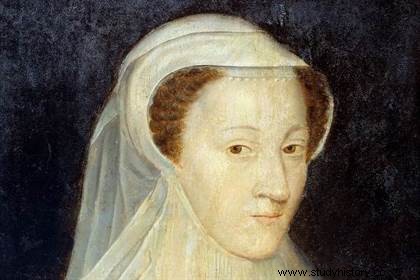 In the context of the establishment of the Anglican Church, Elizabeth saw a strong rival rise in the person of Mary Stuart. This had already threatened her when she acceded to the throne, but the rivalry turns into a conflict when the Catholics take the side of the Queen of Scotland. Elisabeth is however more skilled in agitating the Scottish barons against Mary; the latter had to abdicate in favor of her son Jacques in 1567. She fled to England where she was arrested and imprisoned on the orders of Elisabeth.
In the context of the establishment of the Anglican Church, Elizabeth saw a strong rival rise in the person of Mary Stuart. This had already threatened her when she acceded to the throne, but the rivalry turns into a conflict when the Catholics take the side of the Queen of Scotland. Elisabeth is however more skilled in agitating the Scottish barons against Mary; the latter had to abdicate in favor of her son Jacques in 1567. She fled to England where she was arrested and imprisoned on the orders of Elisabeth.
Yet even locked up, Mary Stuart remains dangerous for Queen Elizabeth. Always supported by Catholics, and even more so following the excommunication of the sovereign in 1570, she is suspected of fomenting plot upon plot. The queen bears the situation for many years but must resolve to have her executed in 1587.
The international policy of Elizabeth I
The reign of Elizabeth is marked by the real beginning of the maritime and colonial rise of England. However, it faces some obstacles, especially Spain.
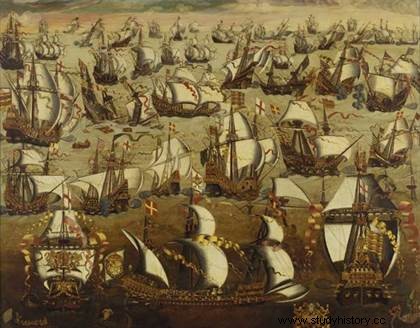
However, England begins its overseas expansion. This was the time of explorations by Francis Drake (at the turn of the 1580s), the creation of the Compagnie des Indes (1600) and colonization in North America (creation of Virginia, in homage to the "virgin queen by Raleigh). From the 1560s, English sailors embarked on systematic explorations, but also in the race against Portuguese and Spanish ships, with John Hawkins for example. Their travels take them as far as Russia, Africa, the Euphrates, or the court of the great Mughal in India.
The “Virgin Queen”
 A large part of the myth of Elisabeth, which she helped to create, is that of her virginity. She was never married and had no children. There are many debates on the subject, even if it is assumed that she had lovers, such as Robert Dudley or Robert of Essex. On the other hand, it refused the most prestigious hands, from Philippe II to Ivan the Terrible via the future king of France, Henri III! Several reasons can be invoked, the main ones being political, whether with foreign sovereigns or with the even more numerous English nobles who courted him. Religion was also important, and the “governor” of the Anglican Church could not marry, for example, the very Catholic King of Spain…
A large part of the myth of Elisabeth, which she helped to create, is that of her virginity. She was never married and had no children. There are many debates on the subject, even if it is assumed that she had lovers, such as Robert Dudley or Robert of Essex. On the other hand, it refused the most prestigious hands, from Philippe II to Ivan the Terrible via the future king of France, Henri III! Several reasons can be invoked, the main ones being political, whether with foreign sovereigns or with the even more numerous English nobles who courted him. Religion was also important, and the “governor” of the Anglican Church could not marry, for example, the very Catholic King of Spain…
When, during the 1580s, it became certain that she would not marry, and above all would not have children, a successor had to be found for her. In 1601, Jacques VI of Scotland was named, as the great-grandson of Jacques IV, who had married the sister of Henry VIII.
The reign of Elizabeth I:a golden age?
The queen's personality, her way of governing, her own "propaganda" contributed to making her an almost mythical queen, living in an exceptional time for England.
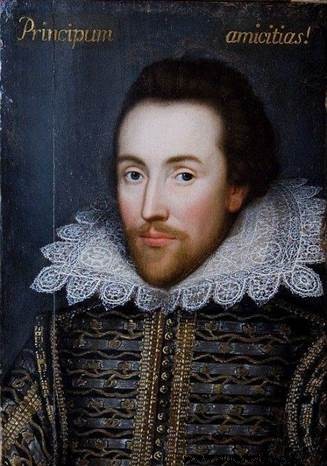
However, we know that, if she was a great queen, Elisabeth was also criticized for her angry character, her authoritarianism, her sometimes difficulty in making decisions, and a few errors such as aid to Protestants in the Netherlands. She also left an impoverished country, and her end of reign was marked by tensions with Parliament, wars and loneliness.
However, the Elizabethan period was also one of great artistic and cultural development, the most famous example being obviously Shakespeare. The economy is also booming, progress somewhat hampered by the expenses due to the wars at the end of the reign. Finally, society is undergoing profound changes, agriculture must adapt and maritime trade is asserting itself, mainly to the benefit of the bourgeoisie.
The Queen of Elizabeth I died in 1603, and with her the House of Tudor. Jacques VI Stuart succeeds him, under the name of Jacques I of England. Beyond the myth of the "virgin queen", Elizabeth's reign is very important in the history of England, with the end of the establishment of the Anglican Church and the maritime expansion, just like the affirmation of a culture and a civilization. And the queen's mystery and personality continue to fascinate to this day.
Bibliography
- M. Duchein, Elisabeth I of England, Fayard, 1992.
- J. Chastenet, Elisabeth 1st. Marabout, 1983.
- L. Crété, The Tudors, Flammarion, 2010.
To go further
- The Virgin Queen, British TV movie, on DVD, 2011.
